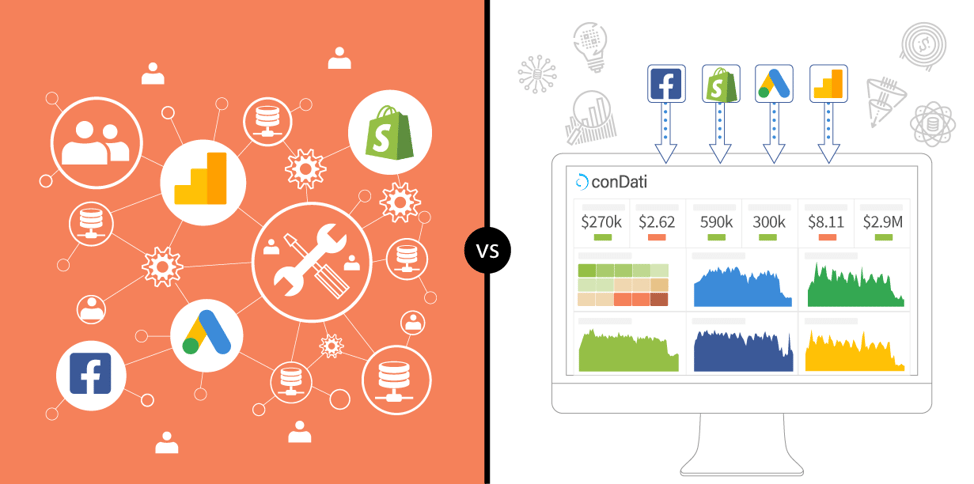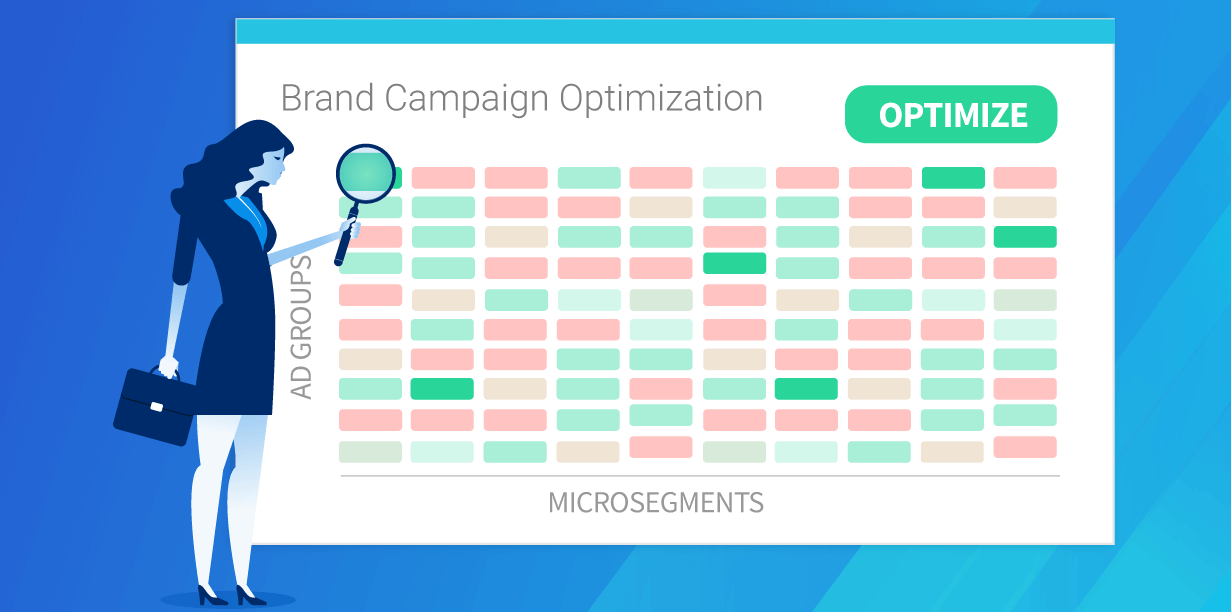Making the Build vs. Analytics-as-a-Service Decision for Marketing Analytics

Without the ability to unify disparate marketing data - stitch it together and organize it in a meaningful way - then visualize it to easily distill insights to drive business decisions - data is just data. While this is a common problem that marketing leaders list as a priority to overcome, many companies are still painfully and frustratingly pulling together data manually for reporting and analysis. In fact, in a 2018 Gartner survey they found marketing analytics teams spend more time wrangling data than building insights.
So why does this key component to drive success keep getting shuffled down the list … I’m sure there are a multitude of reasons, but I personally feel it’s because of the misconception that unifying siloed marketing data is a drawn-out, complicated, expensive process. Don’t get me wrong, it can be. But it doesn’t have to be.
It is really dependent on whether a business chooses to build in-house, partner with a few vendors or go down the analytics-as-a-service route. There are a number of factors to consider, including human resource costs, technical proficiency, software and cloud infrastructure costs and time. Let’s break those down.
Human Resource Costs
A data engineer and marketing analyst or data scientist are the bare minimum you need to get you going when building in-house. Remember it is not just the cost of pulling them away from their current day-to-day work but there will be ongoing maintenance, and likely the need to add additional data sources along the way. If you go with a data aggregation vendor, these resources will also be needed as all the vendor is providing is the technology to pull the data together, they don’t actually do the work for you or build dashboards. If you don’t have these types of resources to spare analytics-as-a-service, such as conDati is perfect. It is a managed service and these resources are built into the cost.
Technical Proficiency
If building in-house or leveraging a data aggregation vendor make sure your engineers and data scientists have the expertise needed. Data unification can be a tricky and finicky process - the learning curve is steep! Alternatively, analytics-as-a-service like conDati will take care of it all for you. You can leverage the expertise of a dedicated team of engineers and data scientists to not only get you onboarded but will support you beyond implementation. Data engineers will constantly monitor and maintain data flow. Data scientists will meet with you regularly to provide analysis support and guidance.
Software & Cloud Infrastructure Costs
The software costs can add up quickly. Here is a shortlist of what you need to consider:
- Aggregation tool
- Data warehousing
- Data visualization tool
- Servers
- Data storage
It would likely surprise you that conDati offer’s all of this for less than the salary of a Data Scientist. That right’s, everything on the list plus data engineering and data science support. No hidden data or data warehousing costs.
Time
Data unification projects can easily take 12-18 months if building in-house. Working with each individual data source could take a month at a time as you build integrations with various platforms for data collection and sharing with other applications. Then there is the ongoing maintenance of these point-to-point integrations. With conDati you can be up and running in as little as two weeks!
Here is a side-by-side comparison for easy reference:
| Marketing Analytics Build vs. Buy Comparison Matrix | |||
| Build from Scratch | Leveraging Data Aggregation Vendor | conDati Analytics-as-a-Service | |
| Summary |
|
|
|
| Annual Costs | $500K/year and up (data engineering/data science resource costs + data warehousing + data visualization tool + servers + data storage) |
~ $100K/year for aggregation tool (ETL) + data engineering/IT resource costs + database + visualization tool | Less than the salary of a FTE Data Scientist! |
| Implementation | Months for each data source | Weeks for customer to transform each data source | Data ingestion activation takes minutes, and initial digital marketing insights are available within days. |
| Data Engineering/IT Resources | Required to build ETL and maintain tools and data flow | Required to maintain tools and data flow | Included |
| Marketing Analyst/Data Scientist Resources | Required to build and maintain dashboards | Required to build and maintain dashboards | Included |
| Data Visualization | Not Included | Maybe Included | Included |
| Managed Service | No | No | Yes |
| Artificial Intelligence (AI)/ Machine Learning (ML) | Not Included | Not Included | Can be turned on within days when customer is ready for it |
| Database | Not Included | Not Included | Customer-specific Snowflake warehouse |
| Storage Costs | Yes - quickly gets expensive as the business grows | Additional storage capacity not built into base price | Storage capacity up to 4 petabytes |
| Data Sources | Time and storage costs with each additional data source added | Check as data sources included in base prices vary by vendor | 4 included
|
It’s time to bring your data unification and analytics projects to the top of your priority lists. As you can see, it doesn’t have to be daunting or expensive. If you want to learn more, we would love to talk to you. Contact us for more information.




